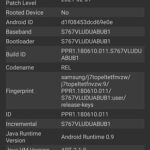Experiencing a P0299 code in your vehicle can be frustrating, often indicating a turbocharger underboost condition. This code suggests that your engine isn’t receiving the expected boost pressure from the turbocharger, leading to reduced performance and potentially other issues. Let’s delve into a recent diagnostic journey to understand how to approach this problem, drawing from real-world experience to guide your troubleshooting process.
One common approach to diagnosing a P0299 code involves systematically checking components related to the turbo system. A good starting point is to examine the sensors that provide crucial data to the engine control unit (ECU). These sensors include the Manifold Absolute Pressure (MAP) sensor and the Exhaust Back Pressure (EBP) sensor.
The MAP sensor plays a vital role in measuring the intake manifold pressure, which is essential for the ECU to determine the boost pressure generated by the turbo. Similarly, the EBP sensor monitors the exhaust back pressure, another critical parameter for turbocharger operation.
During a recent diagnostic procedure, a mechanic began by inspecting the MAP sensor and its associated hose. The hose was found to be in good condition, free from cracks or leaks that could disrupt pressure readings. The MAP sensor and its electrical connector (pigtail) also appeared to be in proper working order, showing no signs of damage or corrosion.
Moving further, the mechanic checked the EBP sensor. Interestingly, upon locating the EBP sensor, it was discovered that the nut securing it to the exhaust manifold was significantly loose. This looseness could potentially cause inaccurate readings or even leaks in the exhaust system, affecting turbo performance and potentially triggering the P0299 code. The EBP sensor itself and its connecting tube were inspected and found to be clear of blockage. There was some liquid present in the sensor and tube, which smelled like coolant, although this observation was uncertain due to pre-existing coolant smell on the mechanic’s hands.
After reassembling all components, including tightening the loose EBP sensor nut, the vehicle’s computer was reset by disconnecting the batteries. Following the reset, a test drive was conducted. Initially, the check engine light was absent, even after multiple stops and restarts. This suggested a potential temporary resolution, possibly due to the correction of the loose EBP sensor.
However, despite the check engine light disappearing, a recurring symptom persisted. When decelerating and depressing the clutch pedal in a manual transmission vehicle, an unusual sound emanating from the turbocharger was observed, described as a momentary “cut off.” This coincided with a drop in the VGT (Variable Geometry Turbo) percentage from 85% to 14% and then back to 85%. This VGT fluctuation, coupled with the turbo sound, strongly indicates an ongoing issue within the turbo system, even if the P0299 code has not immediately returned.
This persistent symptom suggests that while the loose EBP sensor might have contributed to the P0299 code, it may not be the sole cause. The turbocharger itself or its control mechanisms may still be experiencing problems. Therefore, if the check engine light and P0299 code reappear, further investigation into the turbocharger, including its vacuum lines, wastegate, and VGT system, will be necessary to fully diagnose and resolve the turbo underboost condition. This step-by-step approach, starting with sensor checks and progressing to more complex turbo system components, is crucial for effectively troubleshooting P0299 and related turbocharger issues.
